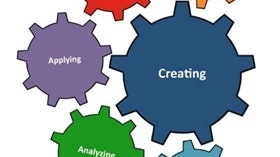Homepage
•
Learning Library
•
Blog
•
Choosing mobile apps for higher-order thinking skills
Expand breadcrumbs
Expand breadcrumbs
- Learning Library
- Blog
- Choosing mobile apps for higher-order thinking skills
- Homepage
- •
- Learning Library
- •
- Blog
- •
- Choosing mobile apps for higher-order thinking skills
Choosing mobile apps for higher-order thinking skills
By Nicole Krueger
September 2, 2014








